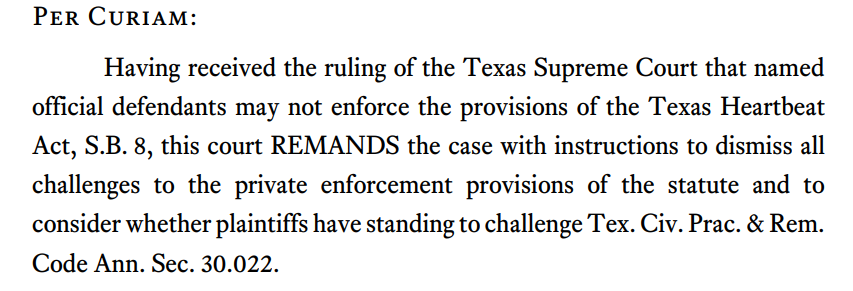 In In re A&D Interests, a FLSA “collective action” involving exotic dancers, the panel majority and a dissent differed over whether the district court’s handling of a notice issue entitled the defendant to mandamus relief. The majority (“Judge Curiam,” speaking on behalf of Judges Smith and Willett) saw “clear and indisputable” error in the district court’s application of recent Circuit precedent, while the dissent (Judge Higginson) did not, citing previous actions in the case by the Court. No. 22-40039-CV (May 3, 2022).
In In re A&D Interests, a FLSA “collective action” involving exotic dancers, the panel majority and a dissent differed over whether the district court’s handling of a notice issue entitled the defendant to mandamus relief. The majority (“Judge Curiam,” speaking on behalf of Judges Smith and Willett) saw “clear and indisputable” error in the district court’s application of recent Circuit precedent, while the dissent (Judge Higginson) did not, citing previous actions in the case by the Court. No. 22-40039-CV (May 3, 2022).
 The civil codes of Louisiana and Ecuador share a common lineage in the Napoleonic Code, which came in handy in Guerrero v. Occidental Petroleum–a dispute over a provision in Ecuadorian law that affected how hundreds of millions of dollars would be allocated in a litigation settlement. No. 20-20633 (May 5, 2022).
The civil codes of Louisiana and Ecuador share a common lineage in the Napoleonic Code, which came in handy in Guerrero v. Occidental Petroleum–a dispute over a provision in Ecuadorian law that affected how hundreds of millions of dollars would be allocated in a litigation settlement. No. 20-20633 (May 5, 2022).
Johnson v. Huffington Post held, as to a libel claim, that Fifth Circuit precedent compelled dismissal for lack of personal jurisdiction: “HuffPost is interactive, but its story about Johnson has no ties to Texas. The story does not mention Texas. It recounts a meeting that took place outside Texas, and it used no Texan sources. Accordingly, we lack jurisdiction over HuffPost with respect to Johnson’s libel claim.” The full court recently voted 10-7 to not take the matter en banc, as follows:
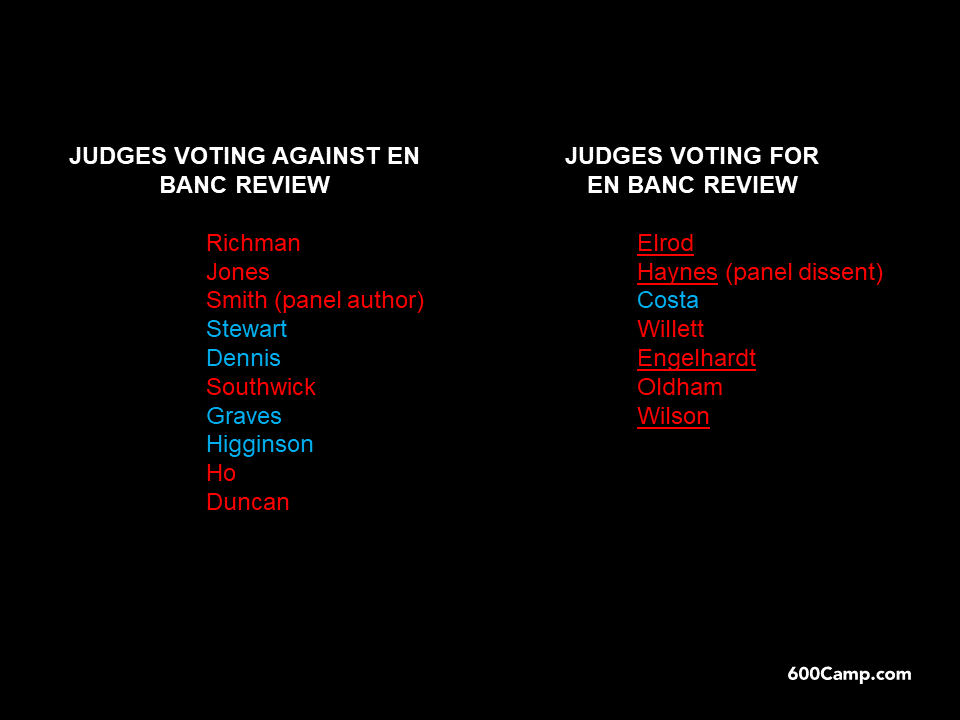 The third panel member, Judge King, as a senior judge was not eligible to participate in the en banc vote. The four judges whose names are underlined joined a dissent from the denial of en banc review.
The third panel member, Judge King, as a senior judge was not eligible to participate in the en banc vote. The four judges whose names are underlined joined a dissent from the denial of en banc review.
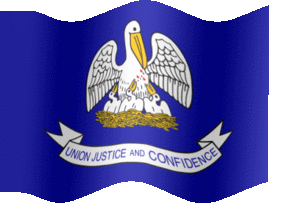 The plaintiff’s pleading at the time of removal in Turner v. GoAuto Ins. Co. described a putative class made up of only “citizens of Louisiana.” The defendant argued “that the Louisiana law contravened Louisiana law in several ways by allowing [Plaintiff] to amend his complaint to redefine the class.” But that argument ran afoul of the “basic precept of our federal system … that federal courts do not exercise authority over the proceedings of a sovereign state’s judiciary as it relates to that state’s laws,” which meant that the amended pleading controlled, and that the defendant could not establish the necessary diversity of citizenship. No. 22-30103 (May 2, 2022).
The plaintiff’s pleading at the time of removal in Turner v. GoAuto Ins. Co. described a putative class made up of only “citizens of Louisiana.” The defendant argued “that the Louisiana law contravened Louisiana law in several ways by allowing [Plaintiff] to amend his complaint to redefine the class.” But that argument ran afoul of the “basic precept of our federal system … that federal courts do not exercise authority over the proceedings of a sovereign state’s judiciary as it relates to that state’s laws,” which meant that the amended pleading controlled, and that the defendant could not establish the necessary diversity of citizenship. No. 22-30103 (May 2, 2022).
 I recently wrote a short piece for the UK’s Solicitor’s Journal about two recent personal-jurisdiction cases of note–one from the Fifth Circuit and one from the Dallas Court of Appeals–which it published as an “international insight” and titled “How to Deal with Texas Businesses Without getting Sued.”
I recently wrote a short piece for the UK’s Solicitor’s Journal about two recent personal-jurisdiction cases of note–one from the Fifth Circuit and one from the Dallas Court of Appeals–which it published as an “international insight” and titled “How to Deal with Texas Businesses Without getting Sued.”
The saying “that’s all she wrote” was particularly apt for the Fifth Circuit yesterday, as the hard-fought litigation brought by abortion providers to challenge Texas’s SB8 took its final turn back to the district court:
Whole Woman’s Health v. Jackson, No. 21-50792 (April 26, 2022).
 Reversing the Fifth Circuit’s opinion in City of Austin v. Reagan Nat’l Advertising, 972 F.3d 696 (5th Cir. 2020), the Supreme Court held that Austin’s use of an “on-/off-premises distinction” did not create a content restriction. The majority opinion reasoned:
Reversing the Fifth Circuit’s opinion in City of Austin v. Reagan Nat’l Advertising, 972 F.3d 696 (5th Cir. 2020), the Supreme Court held that Austin’s use of an “on-/off-premises distinction” did not create a content restriction. The majority opinion reasoned:
A sign’s substantive message itself is irrelevant to the application of the provisions; there are no content-discriminatory classifications for political messages, ideological messages, or directional messages concerning specific events, including those sponsored by religious and nonprofit organizations. Rather, the City’s provisions distinguish based on location: A given sign is treated differently based solely on whether it is located on the same premises as the thing being discussed or not. The message on the sign matters only to the extent that it informs the sign’s relative location. The on-/off-premises distinction is therefore similar to ordinary time, place, or manner restrictions.
No. 20-1029 (U.S. April 21, 2022) (applying Reed v. Gilbert, 576 U.S. 155 (2015)).
 While Solis v. Serrett deftly summarizes the Baroque case law about qualified immunity and use of force, it will be remembered for its constructive use of hyperlinks — links to the relevant video footage about the incidents in question. Particularly in this area of law, where dash and body cameras often provide critical evidence, including this material in the opinion provides helpful guidance for law enforcement officers and their counsel. No. 21-20256 (April 21, 2022) (citing, inter alia, this body camera video and this dash camera video).
While Solis v. Serrett deftly summarizes the Baroque case law about qualified immunity and use of force, it will be remembered for its constructive use of hyperlinks — links to the relevant video footage about the incidents in question. Particularly in this area of law, where dash and body cameras often provide critical evidence, including this material in the opinion provides helpful guidance for law enforcement officers and their counsel. No. 21-20256 (April 21, 2022) (citing, inter alia, this body camera video and this dash camera video). 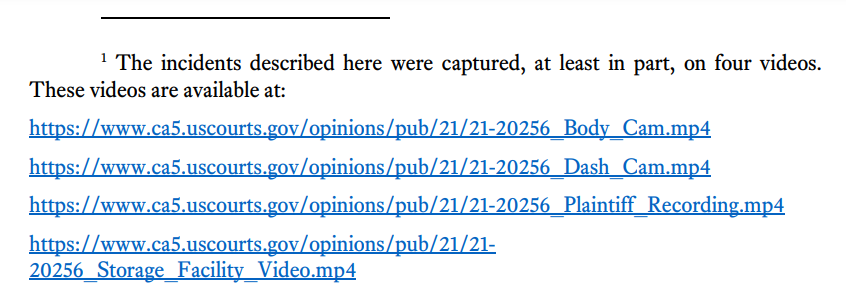
Some years ago, I unsuccessfully litigated a case about a contractual waiver of the right to remove. (The unique facts of that case were that Collin County had no federal courthouse at the time, but the Eastern District’s Plano facility was under construction.) Collin County v. Siemens Business Services, 250 F. App’x 45 (5th Cir. 2007). That case prompted me and two colleagues to write a thorough survey of the law on this topic, see Coale, Visosky & Cochrane, “Contractual Waiver of the Right to Remove to Federal Court,” 29 Rev. Litig. 327 (2010), after which I thought I had “seen it all” as to contractual waivers of removal rights.
However, I was wrong, as Dynamic CRM Recruiting Solutions LLC v. UMA Education, Inc. examines yet another turn of phrase in such a clause–what it means for an action to be “brought before” a particular tribunal. The Fifth Circuit held that “by using terminology similar to that which courts have generally construed as forbidding removal, they were waiving their right to remove an action filed in Harris County district court to federal court.” No. 21-20351 (April 19, 2022). The article now needs a pocket part.
“Plaintiffs who succeed in winning a money judgment against a state governmental entity in state court in Louisiana often find themselves in a frustrating situation. Though they have obtained a favorable judgment, they lack the means to enforce it. The Louisiana Constitution bars the seizure of public funds or property to satisfy a judgment against the state or its political subdivisions. Instead, the Legislature or the political subdivision must make a specific appropriation in order to satisfy the judgment. And since Louisiana courts lack the power to force another branch of government to make an appropriation, the prevailing plaintiff has no judicial mechanism to compel the defendant to pay. …
Finding themselves in this position, the Plaintiffs in this case, like others before them, have turned to the federal courts to force payment on their state court judgment. They claim that the Defendants’ failure to timely satisfy a state court judgment violates the Takings Clause of the Fifth
Amendment. The district court granted the Defendants’ motion to dismiss, applying long-standing precedent that there is no property right to timely payment on a judgment.”
The Fifth Circuit affirmed the dismissal. Ariyan, Inc v. Sewarage & Water Board of New Orleans, No. 21-30335 (March 21, 2022) (citations omitted); cf. generally Preston Hollow Capital v. Cottonwood Devel. Corp., 23 F.4th 550 (5th Cir. 2022) (also affirming dismissal of takings claim).
The Urban Dictionary associates the phrase “been had” with the buyer of an unintendedly green ring. The Fifth Circuit associates the phrase with the “buyer” of a JAMS arbitration:
Here the parties’ arbitration agreements called for arbitration pursuant to JAMS Comprehensive Arbitration Rules and Procedures, which included the right of JAMS to terminate the arbitration proceedings for nonpayment of fees by any party. Exercising this right, JAMS terminated the arbitration proceeding following the Fund’s nonpayment. Following the lead of our sister circuits, we conclude that arbitration ‘has been had.’ Even though the arbitration did not reach the final merits and was instead terminated because of a party’s failure to pay its JAMS fees, the parties still exercised their contractual right to arbitrate prior to judicial resolution in accordance with the terms of their agreements.
Noble Capital Fund Mgmnt. LLC v. US Capital, No. 21-50609 (April 13, 2022) (footnotes omitted) (emphasis added).
A merits panel, with a notably different makeup than the motions panel, reversed a preliminary injunction about a federal-employee vaccination requirement in Feds for Medical Freedom v. Biden, No. 22-40043 (April 7, 2022).
An antitrust case about the interrelated fees charged for the use of a debit network led to a detailed analysis of antitrust injury; in particular, the Court held as to one of the plaintiff’s claims:
Under Pulse’s theory, it doesn’t lose customers to Visa in a fair fight over per transaction fees. Rather, Pulse loses customers because Visa abuses its dominance in the debit card market. Merchants have no choice but to pay Visa’s high fixed monthly fee. They recoup that expense by routing more transactions through Visa’s network, which charges lower per-transaction fees than competitors. But Visa can achieve that only by leveraging the upfront fees to artificially deflate its per-transaction fees. We must assume this pricing structure violates the antitrust laws. When we do, the link between Pulse’s injury and Visa’s alleged anticompetitive conduct becomes plain. Pulse is squeezed out of the market because Visa exploits its dominance to impose supracompetitive prices on merchants and simultaneously undercut competitors’ per-transaction fees. That is textbook antitrust injury.
Pulse Network v. Visa, No. 18-20669 (April 5, 2022) (citation omitted, emphasis added). (The case has also drawn attention for its other holding that reassigned the matter to a different district judge on remand).
Seigler v. Wal-Mart Stores LLC presented the question whether a summary-judgment  affidavit in a slip-and-fall case was an impermissible “sham” that contradicted prior deposition testimony.
affidavit in a slip-and-fall case was an impermissible “sham” that contradicted prior deposition testimony.
The district court “identified four discrepancies between Seigler’s deposition testimony and affidavit pertaining to (1) the substance’s color, (2) its temperature and consistency, (3) its size, and (4) whether she touched the substance,” and struck the affidavit.
The Fifth Circuit disagreed, reviewing each of the claimed inconsistencies. In particular, as to the issue of “temperature and consistency,” the Court reasoned:
” Wal-Mart argues that Seigler’s affidavit testimony that the substance was ‘cold,’ ‘congealed,’ and ‘thicken[ed] up’ contradicted her deposition testimony because Seigler testified at her deposition that (1) she had no ‘personal knowledge’ or ‘evidence’ of how long the grease had been on the floor and (2) that the substance was ‘liquid.’ However, we disagree that there was a contradiction. First, we agree with Seigler that a non lawyer deponent is not expected to understand the legal significance of the terms ‘personal knowledge’ and ‘evidence.’ Second, while the discrepancies between Seigler’s deposition and affidavit may call her credibility into question, we do not think they rise to the level of a contradiction or an inherent inconsistency, because the testimony can be reconciled.
Seigler described the substance as ‘some sort of greasy liquid’ at her deposition, but she was not asked questions about its temperature or consistency. Later, in her affidavit, she described the grease as ‘cold,’ ‘congealed,’ and ‘thicken[ed] up.’ These descriptions are not mutually exclusive, nor are they necessarily contradictory. In other words, it is possible that ‘some sort of greasy liquid’ could also be ‘cold,’ ‘congealed’ and ‘thicken[ed] up.’ Thus, we think the proper course in this case is to allow a jury to evaluate the testimony’s credibility.”
No. 20-11080 (April 6, 2022) (citations omitted).
In one corner, Getagadget LLC, which holds a registered trademark for “BIG BITE” for its beach toy shaped like a shark’s head. In the other, Jet Creations, Inc., which makes the Big Bite Prehistoric T-Rex Pool Float. Held, Getagadget did not establish Texas jurisdiction over its trademark-infringement claim when its counsel ordered a Big Bite Prehistoric T-Rex Pool Float:
“[I]n order to demonstrate that its trademark infringement and unfair competition claims arose out of sales that Jet directed at Texas, Getagadget was required to show that those sales were to customers who could have been potentially deceived by the alleged infringement. Getagadget’s counsel’s transactions will not suffice because counsel ‘knew exactly with whom []he was dealing and knew that defendants were not associated in any way with plaintiff.’ ‘Clearly, [Getagadget and its counsel were] not confused as to the source of the products in question.'”
Getagadget LLC v. Jet Creations, Inc., No. 19-41019 (March 30, 2022) (mem. op.).
Of general interest to court-watchers, building on a recent interview that I did with the Lincoln Project, the current episode of the “Coale Mind” podcast examines why today’s Supreme Court is like a bowl of soup, heated by two separate burners.
The first is the ongoing scrutiny over Justice Thomas’s recusal decisions in matters related to his wife’s political activity. The second, cool now but with the potential to become blazing hot, is the pending Dobbs case in which the Court could significantly limit or even overrule Roe v. Wade.
The combined heat potentially generated by these two issues–an ethical dispute about a Justice coupled with the possibility of a uniquely controversial ruling–could present a legitimacy problem for the Court of a magnitude not seen in recent memory.
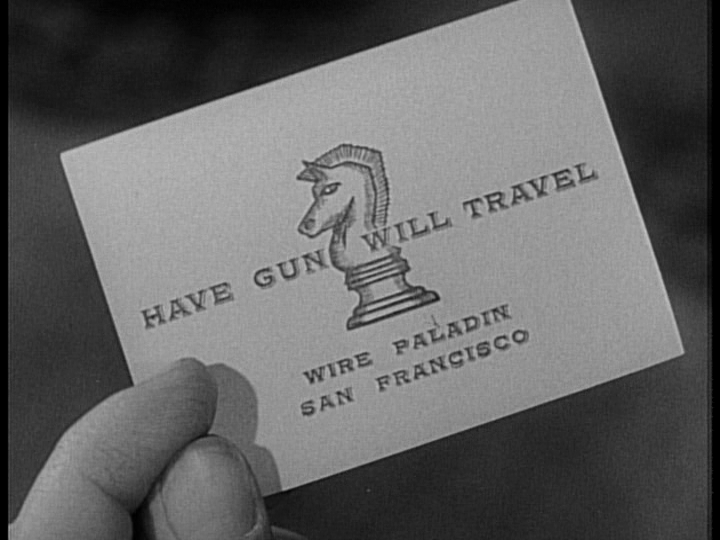 The panel majority opinion in Defense Distributed v. Bruck presents a rare — indeed, near-singular — grant of mandamus relief as to a transfer of venue (combined with a ruling about severance). The business at issue involves the growing, and controversial, field of creating firearms with 3-D printers. A dissent made a number of objections, substantive and procedural. No. 21-50327 (April 1, 2022).
The panel majority opinion in Defense Distributed v. Bruck presents a rare — indeed, near-singular — grant of mandamus relief as to a transfer of venue (combined with a ruling about severance). The business at issue involves the growing, and controversial, field of creating firearms with 3-D printers. A dissent made a number of objections, substantive and procedural. No. 21-50327 (April 1, 2022).
A sanctions award was reversed in Ozmun v. Wood when, among other matters: “‘[T]he district court denied PRA[‘s] cross motion for summary judgment on the FDCPA claim which indicates [Appellant’s] position was far from frivolous. In fact, it was so substantial that the district court thought it warranted a trial.’ Thus, Ozmun’s claims brought under the TFDCPA were not a ‘clear misuse of the TFDCPA’ as the district court stated. They simply failed on summary judgment.” No. 19-50397 (March 24, 2022) (unpublished, citation omitted)).
 An interlocutory appeal had some matters entangled with it in Jiao v. Xu (not unlike the quantum entanglement recently photographed for the first time, right):
An interlocutory appeal had some matters entangled with it in Jiao v. Xu (not unlike the quantum entanglement recently photographed for the first time, right):
“The preliminary injunction is an interlocutory order made appealable by 28 U.S.C. § 1292(a)(1). The declaratory relief constitutes a final order, and we have appellate jurisdiction under 28 U.S.C. § 2201. The turnover order is likewise final, and we have appellate jurisdiction to review it under 28 U.S.C. § 1291. Typically, we would not have jurisdiction over the district court’s
denial of Xu’s motion to dismiss. But to the extent the
underpinnings of Xu’s motion are inextricably intertwined with the district court’s subsequent rulings challenged on appeal, we determine that we have jurisdiction to address those issues. See Magnolia Marine Transp. Co. v. Laplace Towing Corp., 964 F.2d 1571, 1580 (5th Cir. 1992) (‘[O]ur jurisdiction is not limited to the specific [injunctive] order appealed from, and we may review all matters which establish the immediate basis for granting injunctive relief.’); see also In re Lease Oil Antitrust Litig. (No. II), 200 F.3d 317, 320 (5th Cir. 2000) (reaching denial of motion to dismiss as part of § 1292(a)(1) appeal where issues were ‘so entangled as to arrive here together’ and ‘[d]elaying review . . . would make no practical sense’).”
No. 20-20106 (March 11, 2022) (emphasis added, footnote and certain citations omitted).
 Making an Erie guess about Louisiana insurance law, the Fifth Circuit held: “Consistent with our decision in Terry Black’s, and the decisions of the unanimous circuit courts, we conclude, pursuant to Louisiana law, that losses caused by civil authority orders closing nonessential businesses in response to the COVID-19 pandemic do not fall within the meaning of ‘direct physical loss of or damage to property.'” Q Clothier v. Twin City Fire Ins., No. 21-30278 (March 22, 2022).
Making an Erie guess about Louisiana insurance law, the Fifth Circuit held: “Consistent with our decision in Terry Black’s, and the decisions of the unanimous circuit courts, we conclude, pursuant to Louisiana law, that losses caused by civil authority orders closing nonessential businesses in response to the COVID-19 pandemic do not fall within the meaning of ‘direct physical loss of or damage to property.'” Q Clothier v. Twin City Fire Ins., No. 21-30278 (March 22, 2022).
Trafigura Trading v. United States featured a dispute about one of the many prohibitions in Article I Section 9 of the Constitution; specifically, clause 5, which says: “No Tax or Duty shall be laid on Articles exported from any State.” An oil company argued that a federally-imposed charge on oil exports, collected to finance the Oil Spill Liability Trust Fund, violated this provision.
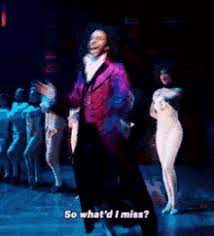 The district court ruled for the oil company and a Fifth Circuit panel affirmed. One judge, drawing heavily from lyrics made famous by “Hamilton,” described the surprisingly colorful history of this provision, and voted to affirm. Another judge voted to affirm but declined to join that opinion. And the third judge dissented. As a result, the other opinion had no quorum supporting it and thus lacked precedential effect. No. 21-20127 (March 24, 2022).
The district court ruled for the oil company and a Fifth Circuit panel affirmed. One judge, drawing heavily from lyrics made famous by “Hamilton,” described the surprisingly colorful history of this provision, and voted to affirm. Another judge voted to affirm but declined to join that opinion. And the third judge dissented. As a result, the other opinion had no quorum supporting it and thus lacked precedential effect. No. 21-20127 (March 24, 2022).
On that broader subject, cf. Sambrano v. United Airlines, No. 21-11159 (Feb. 17, 2022) (Smith, J., dissenting) (sympathizing with “the hapless trial judge or conscientious advocate” that must reason from nonprecedential rulings); see generally Alexander Hamilton, Federalist No. 78 (May 28, 1788) (“To avoid an arbitrary discretion in the courts, it is indispensable that they should be bound down by strict rules and precedents, which serve to define and point out their duty in every particular case that comes before them; and it will readily be conceived from the variety of controversies which grow out of the folly and wickedness of mankind, that the records of those precedents must unavoidably swell to a very considerable bulk, and must demand long and laborious study to acquire a competent knowledge of them.”).
The PREP Act — a 2005 law allowing the HHS secretary to make a declaration that immunizes certain disaster responders from liability — was held not to completely preempt state-law negligence claims in Mitchell v. Advanced HCS. The Fifth Circuit noted:
- “First, the only cause of action [the PREP Act] creates is for willful misconduct. Assuming—without deciding—that the willful misconduct cause of action is completely preemptive, the question is whether Mitchell ‘could have brought’ the instant claims under that cause of action. He could not. The Act clearly states that its willful-misconduct cause of action creates ‘a standard for liability that is more stringent than a standard of negligence in any form or recklessness.'”
- “Second, the compensation fund that the Act creates is not completely preemptive under this court’s precedents. To begin, a ‘compensation fund is not a cause of action.’ It may be a civil-enforcement provision, but such provisions must nevertheless ‘create[] a cause of action.’ … Assuming arguendo that the compensation fund suffices as a cause of action, the Act nevertheless does not create ‘a specific jurisdictional grant to the federal courts for enforcement of the right.’ Instead, the Secretary oversees administration of the fund. Worse, the statute expressly withdraws jurisdiction from any court, state or federal, concerning ‘any action [taken] by the Secretary’ in doing so.”
No. 21-10477 (March 10, 2022) (citations omitted, emphasis added).
“Attempting to sidestep Rooker-Feldman, Paul argues that an exception to the doctrine allows for collateral review of state court judgments that are void ab initio for lack of jurisdiction. ‘This court has neither endorsed nor rejected [this] exception,’ and ‘[o]ur sister circuits are split on the issue.’ We need not resolve the split here, however, because even if we were to adopt this exception, ‘the cases that . . . recognize’ it ‘indicate that it is presently limited to the bankruptcy context.’ What is more, Paul’s basis for contesting the Texas courts’ jurisdiction is that the vexatious litigant statute is unconstitutional. But a judgment is not void simply because it applied an unconstitutional statute.” Nunu v. State of Texas, No. 21-20446 (March 17, 2022, unpublished).
FERC v. Ultra Resources presented a novel question about the interaction of the Bankruptcy Court and a filed-rate contract, and held “that under the particular circumstances presented here, Ultra Resources is not subject to a separate public-law obligation to continue performance of its rejected contract, and that 11 U.S.C. § 1129(a)(6) did not require the bankruptcy court to seek FERC’s approval before it confirmed Ultra Resource’s reorganization plan.” No. 21-20126 (March 14, 2022).
 The long shadow of Edward Young (right), who served as Minnesota’s well-mustachioed Attorney General in the early 20th century, fell upon two companion cases about Texas election laws, in which a panel majority found that the Texas Secretary of State was not a proper defendant under Ex Parte Young. A dissent (from both panel opinions) saw matters otherwise:
The long shadow of Edward Young (right), who served as Minnesota’s well-mustachioed Attorney General in the early 20th century, fell upon two companion cases about Texas election laws, in which a panel majority found that the Texas Secretary of State was not a proper defendant under Ex Parte Young. A dissent (from both panel opinions) saw matters otherwise:
I write to remind failing memories of the signal role of Ex parte Young in directly policing the path of cases and controversies to the Supreme Court from our state and federal courts and warn against its further diminution. … ‘Ex parte Young poses no threat to the Eleventh Amendment or to the fundamental tenets of federalism. To the contrary, it is a powerful implementation of federalism necessary to the Supremacy Clause, a stellar companion to Marbury and Martin v. Hunter’s Lessee.’
…
The majority continues this Court’s effort to shrink the role of Ex parte Young, by overly narrow readings of the state officer’s duty to enforce Texas’s election laws. … [T]he Texas Secretary of State is the “chief election officer of the state” and is directly instructed by statute to “obtain and maintain uniformity in the application, operation, and
interpretation of this code and of the election laws outside this code.” Moreover, the Secretary is charged to “take appropriate action to protect the voting rights of the citizens of this state from abuse by the authorities administering the state’s electoral processes” and “to correct offending conduct.” Although recent decisions by this Court have split hairs regarding the level of enforcement authority required to satisfy Ex parte Young, the Secretary is charged to interpret both the Texas Election Code and the election laws outside the Code, including federal law, to gain uniformity, tasks it is clearly bound to do. The allegation in these cases is that the Secretary is failing in that duty. This charge should satisfy our Ex parte Young inquiry.
TARC v. Scott, No. 20-40643 (March 16, 2022); Richardson v. Flores, No. 20-50744 (March 16, 2022) (footnotes and citations omitted). (I was recently interviewed about the case by KDFW-TV in Dallas.)
A dispute about “fee forfeiture,” in the broader context of fidiuciary-duty breaches by a company’s lawyer, led to this observation about the proper role of the Burrow v. Arce fee-forfeiture factors: “[T]there is no “windfall” given the record in this case. Hughes unfairly transferred PPI’s assets to Performance Probiotics, in breach of her fiduciary duty to PPI, and then used those assets to generate the fees at issue. That is, even though Hughes was paid by Performance Probiotics, she was effectively paying herself with funds that were rightfully PPI’s. We find no abuse of discretion in the district court’s award of fee forfeiture in this context as it accords with the general rule that disloyal agents must disgorge their ill-gotten gains.” Thomas v. Hughes, No. 20-50671 (March 3, 2022).
“Hughes asserts there was insufficient evidence to establish that Pearcy had any trade secrets or that Hughes and Performance Probiotics improperly used any of Pearcy’s trade secrets. But Hughes did not raise these challenges in her oral [Fed. R. Civ. P.] 50(a) motion at trial. Instead, Hughes ‘move[d] for [a] directed verdict on the misappropriation of trade secrets [claim] on the ground[ ] that there [was] no evidence of an appropriate measure of damages for that cause of action,’ an argument she renewed in her Rule 50(b) motion and likewise urges here. Because Hughes did not challenge the existence of a trade secret or improper use in her initial Rule 50(a) motion, those issues were not properly raised in her post-trial Rule 50(b) motion. We therefore decline to address them on appeal.”
Thomas v. Hughes, No. 20-50671 (March 3, 2022).
A technical setting illustrated a basic requirement for a justiciable claim in Continental Automotive Systems v. Avanci:
“[A]ssuming Continental is contractually entitled to a license on FRAND [‘fair, reasonable, and nondiscriminatory’] terms as a third-party beneficiary, the pleadings reflect that it has suffered no cognizable injury. Put another way, even if Continental has rights under FRAND contracts, the contracts have not been breached because the SEP [‘standard-essential patent’] holders have fulfilled their obligations to the SSOs [“standard-setting organizations”] with respect to Continental. The supplier acknowledges that Avanci and Patent-Holder Defendants are ‘actively licensing the SEPs to the OEMs[,]’ which means that they are making SEP licenses available to Continental on FRAND terms. As it does not need to personally own SEP licenses to operate its business, it has not been denied property to which it was entitled. And absent a ‘denial of property to which a plaintiff is entitled,’ Continental did not suffer an injury in fact. ”
No. 20-11032 (Feb. 28, 2022).
 While Johnny Cash famously walked the line, the defendants in Earnest v. Sanofi U.S. Servcs., Inc., did not successfully walk the line between Rule 701 and 702, with respect to a senior company employee in a products-liability case: “While parts of Dr. Kopreski’s testimony fall within the parameters of Rule 701, he also strayed beyond ‘facts, . . . subjective beliefs[,] and opinions,’ within either his personal knowledge or his capacity as Sanofi’s corporate designee. He testified regarding highly specialized and technical information related to Taxotere, the TAX316 study, and drug studies in general.” No. 20-30184 (Feb. 10, 2022) (citation omitted).
While Johnny Cash famously walked the line, the defendants in Earnest v. Sanofi U.S. Servcs., Inc., did not successfully walk the line between Rule 701 and 702, with respect to a senior company employee in a products-liability case: “While parts of Dr. Kopreski’s testimony fall within the parameters of Rule 701, he also strayed beyond ‘facts, . . . subjective beliefs[,] and opinions,’ within either his personal knowledge or his capacity as Sanofi’s corporate designee. He testified regarding highly specialized and technical information related to Taxotere, the TAX316 study, and drug studies in general.” No. 20-30184 (Feb. 10, 2022) (citation omitted).
The author of a popular inspirational book sued a school district for copyright infringement when a softball team and color guard posted an excerpt from it (the “WIN Passage”) on Twitter. The Fifth Circuit affirmed the district’s successful defense based on the defense of fair use, in an analysis both succinct and encyclopedic:
- “[T]he purpose and character of the use, including whether such use is of a commercial nature or is for nonprofit educational purposes.” “This involves a few considerations. The first and most obvious is commerciality—’whether the user stands to profit from exploitation of the copyrighted material without paying the customary price.’ The second is whether the user acted in good faith. The third is whether the use is ‘transformative,’ meaning it ‘adds something new’ to the copyrighted work. The school district does not assert that its use was transformative but argues the other inquiries tip the first factor in its favor. We agree.”
- “[T]he nature of the copyrighted work.” “’In general, fair use is more likely to be found in factual works than in fictional works.'” Here, ”[c]onstruing the pleadings in Bell’s favor as we must, the WIN Passage is somewhat creative. The passage largely consists of well-worn truisms …. Still, Bell is entitled to the inference that the school chose the WIN Passage because it combines and condenses these principles in a particularly inspiring way. The second factor goes to Bell. But it is a meager victory. The nature of the work is widely considered the least significant fair-use factor.”
- “[T]he amount and substantiality of the portion used in relation to the copyrighted work as a whole.” “The school quoted a small excerpt from [the book] Winning Isn’t Normal, which was already freely available to the public. As a result, the third factor is neutral.”
- “The fourth factor examines ‘the effect of the use’ on the market for and value of the copyrighted work.” “[Bell’s] complaint contends that widespread
use of the WIN Passage on social media could reduce “the incentive to
purchase Winning Isn’t Normal or related merchandise. … The tweets do not
reproduce such a substantial portion of Winning Isn’t Normal‘ as to make
available a significantly competing substitute’ for the original work. If anything, the properly attributed quotation of a short passage from Winning Isn’t Normal might bolster interest in the book; it is free advertising.”
Bell v. Eagle Mountain Saginaw ISD, No. 21-10504 (Feb. 25, 2022) (all citations omitted).
 The Texas Lawbook summarizes the many practical pointers from an hour-long discussion among Judges Haynes, Costa, and Ho at the recent Bench-Bar conference of the Northern District of Texas. Judge Hendrix from that District’s Lubbock Division moderated.
The Texas Lawbook summarizes the many practical pointers from an hour-long discussion among Judges Haynes, Costa, and Ho at the recent Bench-Bar conference of the Northern District of Texas. Judge Hendrix from that District’s Lubbock Division moderated.
Continuing a not-infrequent practice, the Fifth Circuit denied mandamus relief in In re Royal Street Bistro while providing “[a] brief explanation” of the Court’s skeptical view of a controversial Seventh Circuit opinion about lessee rights. In conclusion, the Court observed: “None of this means that the bankruptcy and district courts’ overstatement of their reasoning created the kind of serious misinterpretation of law or facts that may support one of the criteria for mandamus relief. See In re JP Morgan Chase & Co., 916 F.3d 494, 500 (5th Cir. 2019). Courts must be cautioned, however, against blithely accepting Qualitech‘s reasoning and textual exegesis.” No. 22-30066 (Feb. 16, 2022).
 “Karen does indeed have Article III standing to bring this suit. She seeks money damages to address the death of her son, which was allegedly caused by Defendants’ conduct. So she has sufficiently alleged all three elements required to establish Article III standing at this stage. … The defect here, by contrast, is one of prudential standing. And prudential standing does not present a jurisdictional question, but ‘a merits question: who, according to the governing substantive law, is entitled to enforce the right?’ … And a violation of this rule is a failure of “prudential” standing. ‘[N]ot one
“Karen does indeed have Article III standing to bring this suit. She seeks money damages to address the death of her son, which was allegedly caused by Defendants’ conduct. So she has sufficiently alleged all three elements required to establish Article III standing at this stage. … The defect here, by contrast, is one of prudential standing. And prudential standing does not present a jurisdictional question, but ‘a merits question: who, according to the governing substantive law, is entitled to enforce the right?’ … And a violation of this rule is a failure of “prudential” standing. ‘[N]ot one
[of our precedents] holds that the inquiry is jurisdictional.’ It goes only to the validity of the cause of action. And ‘the absence of a valid … cause of action does not implicate subject-matter jurisdiction.'” Abraugh v. Altimus, No. 21-30205 (Feb. 14, 2022) (citations omitted) (emphasis added, citations omitted).
Hess Corp. v. Schlumberger Tech. Corp. notes an interesting, and seemingly unanswered, question about section 2.608 of the UCC, which says that a “buyer may revoke his acceptance of a lot or commercial unit whose non-conformity substantially impairs its value to him if he has accepted it …..” (emphasis added). One side suggested that this phrase should be read in conjunction with section 2.715, which allows a buyer to recover damages “resulting from the seller’s breach,” while another advocated looking to a line of cases that ask whether a contract breach was a “producing cause” of an injury. The Court noted a dearth of Texas authority tying either suggested approach to this specific UCC provision. No. 20-20663 (Feb. 7, 2022).
 A fiery dissent (literally fiery, as it warns that “the Good Ship Fifth Circuit is afire”) in Sambrano v. United Airlines faults the majority for, among other matters, not publishing the opinion. No. 21-11159 (Feb. 17, 2022). The opinions’ review of Fifth Circuit Local Rule 47.5.4 echoes a long-running debate, throughout all appellate courts, about the benefits and detriments of having multiple tiers of judicial precedent.
A fiery dissent (literally fiery, as it warns that “the Good Ship Fifth Circuit is afire”) in Sambrano v. United Airlines faults the majority for, among other matters, not publishing the opinion. No. 21-11159 (Feb. 17, 2022). The opinions’ review of Fifth Circuit Local Rule 47.5.4 echoes a long-running debate, throughout all appellate courts, about the benefits and detriments of having multiple tiers of judicial precedent.
Texas practitioners will recall similar debate leading up to the adoption of Tex. R. App. P. 47.4, the “memorandum opinion” rule. They will also likely see similarities between this strongly worded dissent and the concurrence in Steward Health Care System v. Saidara from the Dallas Court of Appeals in 2021, which also examined the policy judgments embodied in a different set of appellate-procedure rules.
One issue in Hess Corp. v. Schlumberger Tech. Corp., a UCC case about the oil-and-gas industry, was whether the district court made clearly erroneous fact findings about a party’s compliance with a contract provision; specifically, whether “the difference between the Greene Tweed drawings and the 2004 validated valve was ‘insubstantial.'” The Fifth Circuit approached the issue in three steps:
- Relevant Supreme Court precedent: “The Supreme Court has explained how to apply a clear-error standard to a district court’s credibility findings at a bench trial. The Anderson Court cautioned that a trial court could not ‘insulate [its] findings from review by denominating them credibility determinations’ and outlined certain ‘factors’ for consideration that could show error. Namely, ‘[d]ocuments or objective evidence may contradict the witness’ story; or the story itself may be so internally inconsistent or implausible on its face that a reasonable factfinder would not credit it.’ If ‘such factors are present, the court of appeals may well find clear error even in a finding purportedly based on a credibility determination.’” (citations omitted).
- Relevant Circuit precedent: “We applied Anderson in an appeal involving a fatal maritime collision between a tug and a shrimper; the district court had considered physical evidence, expert testimony analyzing the physical evidence, and independent witness testimony. The district court determined that the tug was at fault. We considered the ‘plausibility and internal consistency” of the shrimper’s account, in addition to the actual evidence. Id. We found that ‘physical evidence strongly support[ed]’ the tug’s case; the tug’s expert witness was far more qualified than the shrimper’s expert and considered more information in making his assessment; the independent witness testimony was ‘inconsistent with the [shrimper’s] account of the collision’; and the shrimper’s account smacked of ‘sheer implausibility.’ Accordingly, we were left with the ‘definite and firm conviction” that the evidence showed clear error by the district court.'” (citation omitted, applying In re Luhr Bros., 157 F.3d 333 (5th Cir. 1998)).
- Conclusion. “The drawings for the seal did not change from 2003 to 2014, and Schlumberger presented some evidence showing a series of springs from 2005 to 2015 that were manufactured within the tolerances specified in the drawings. Although it is clear that Greene Tweed produced springs that were outside the tolerances dictated by the drawings and thus did not conform, it is certainly not “implausible” that Greene Tweed manufactured its valves “to the qualified drawings” under the design-requirement-only interpretation of Section 6.3.2.2 adopted by the district court.”
No. 20-20663 (Feb. 7, 2022).
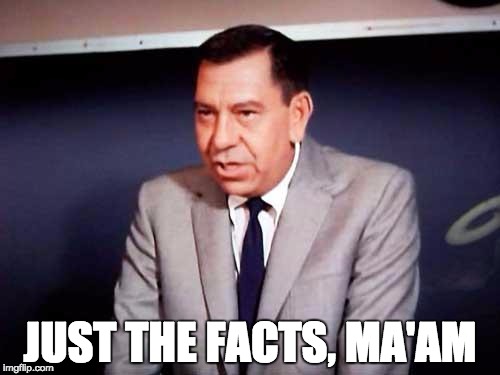 An argument that a summary-judgment motion was granted prematurely failed when:
An argument that a summary-judgment motion was granted prematurely failed when:
“[T]he response did not ‘identify specific facts below that would alter the district court’s analysis’ or in any way /demonstrate . . . how the additional discovery would likely create a genuine [dispute] of material fact.’ Rather, it simply asserted that ‘no depositions have been held, nor have interrogatories, requests for admission, nor requests for documents been exchanged between the parties’ and that the ‘defendant has repeatedly failed to provide evidence of its allegations despite numerous opportunities to do so.'”
MDK v. Proplant, No.21-20207(Feb. 9, 2022) (mem. op.).
 While expediting consideration of the merits, a Fifth Circuit panel declined to stay a national injunction against a vaccination requirement for federal employees; a detailed dissent would have granted an interim stay of the injunction. Feds for Medical Freedom v. Biden, No. 20-30090 (Feb. 11, 2022). A thorough (albeit, highly partisan) article about the case recently appeared in Slate.
While expediting consideration of the merits, a Fifth Circuit panel declined to stay a national injunction against a vaccination requirement for federal employees; a detailed dissent would have granted an interim stay of the injunction. Feds for Medical Freedom v. Biden, No. 20-30090 (Feb. 11, 2022). A thorough (albeit, highly partisan) article about the case recently appeared in Slate.
“To be sure, the order on appeal is the district court’s order denying Doe’s motion to re-open the case and sever the cost-splitting provision of the arbitration agreement—not its order compelling arbitration. But that makes no difference for our purposes. As both parties acknowledge, Doe’s motion to re-open and sever was, in effect, nothing more than a motion to reconsider the merits of part of the district court’s order compelling arbitration. And we have no more jurisdiction to review an order declining to reconsider an order compelling arbitration than we do to review the order compelling arbitration itself.” Doe v. Tonti Mgmnt. Co., No. 21-30295 (Jan. 31, 2022).
 Hurricane Harvey insurance litigation continues. The dispute in Landmark Am. Ins. Co. v. SCD Mem. Place II, LLC involved a “named perils” policy, one of which was “Windstorm or Hail associated with a Named Storm.” While the unfortunate insured experienced significant damage when Buffalo Bayou overflowed its banks and flooded the insured’s property, it did not experience any wind or hail damage. The Fifth Circuit sided with the insured, holding that “[t]his framing sets up ‘Windstorm’ and ‘Hail’ as specific perils that may be associated with a number of weather events rather than as weather events that may encompass any number of perils.” No. 20-20389 (Feb. 3, 2022)
Hurricane Harvey insurance litigation continues. The dispute in Landmark Am. Ins. Co. v. SCD Mem. Place II, LLC involved a “named perils” policy, one of which was “Windstorm or Hail associated with a Named Storm.” While the unfortunate insured experienced significant damage when Buffalo Bayou overflowed its banks and flooded the insured’s property, it did not experience any wind or hail damage. The Fifth Circuit sided with the insured, holding that “[t]his framing sets up ‘Windstorm’ and ‘Hail’ as specific perils that may be associated with a number of weather events rather than as weather events that may encompass any number of perils.” No. 20-20389 (Feb. 3, 2022)
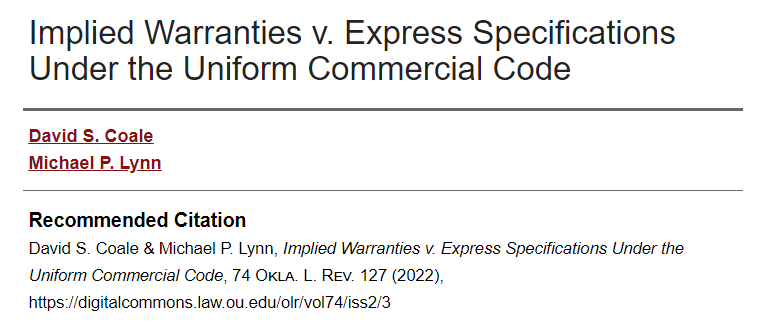 Mike Lynn and I have an article in the latest Oklahoma Law Review about a fiendishly tricky issue with some “battles of the forms” under the Uniform Commercial Code. A few years back, Mike had a hard-fought trial about this issue in the context of the roof insulation for a big warehouse near D/FW Airport. I hope you enjoy it – and can use it someday in your next UCC case – https://digitalcommons.law.ou.edu/olr/vol74/iss2/3
Mike Lynn and I have an article in the latest Oklahoma Law Review about a fiendishly tricky issue with some “battles of the forms” under the Uniform Commercial Code. A few years back, Mike had a hard-fought trial about this issue in the context of the roof insulation for a big warehouse near D/FW Airport. I hope you enjoy it – and can use it someday in your next UCC case – https://digitalcommons.law.ou.edu/olr/vol74/iss2/3
 In Fessler v. Porcelana Corona de Mexico, the Fifth Circuit flushed an attorneys-fee award in a class-action case about allegedly defective toilets, concluding that the district court had not plunged deeply enough into the factor of “degree of success obtained” — “[T]he [district] court stated simply that ‘the work done did not prove fruitless—it resulted in two settled classes receiving a host of monetary and non-monetary benefits they would not have received but for the Class Counsel’s diligent work.’ In other words, not receiving every bit of relief requested is no reason to reduce the lodestar. But this misconstrues Fifth Circuit precedent. The court was required to consider what was sought— compensatory, punitive, and treble damages for five tank models manufactured across nine years. Yet, the Class members only received a maximum of $4000 in damages for two tank models manufactured in one year.” No. 20-40357 (Jan. 10, 2022) (footnote omitted).
In Fessler v. Porcelana Corona de Mexico, the Fifth Circuit flushed an attorneys-fee award in a class-action case about allegedly defective toilets, concluding that the district court had not plunged deeply enough into the factor of “degree of success obtained” — “[T]he [district] court stated simply that ‘the work done did not prove fruitless—it resulted in two settled classes receiving a host of monetary and non-monetary benefits they would not have received but for the Class Counsel’s diligent work.’ In other words, not receiving every bit of relief requested is no reason to reduce the lodestar. But this misconstrues Fifth Circuit precedent. The court was required to consider what was sought— compensatory, punitive, and treble damages for five tank models manufactured across nine years. Yet, the Class members only received a maximum of $4000 in damages for two tank models manufactured in one year.” No. 20-40357 (Jan. 10, 2022) (footnote omitted).
 The Fifth Circuit found that the state-law question about liquor-sale permits presented by Gabriel Inv. Group v. TABC “checks every box” for certification, reasoning:
The Fifth Circuit found that the state-law question about liquor-sale permits presented by Gabriel Inv. Group v. TABC “checks every box” for certification, reasoning:
- “The first factor—the closeness of the question and the existence of sufficient sources of state law—weighs in favor of certification. … Both parties have solid textual and structural support for their positions. Likewise, the Commission does not challenge GIG’s contention that the disputes in this case are questions of first impression in any court.”
- “The second factor—the degree to which considerations of comity are relevant in light of the particular issue and case to be decided—similarly weighs in favor of certification. The Legislature enacted its general ban on public corporations owning or controlling package store permits in 1995, over 26 years ago. According to the parties, only two public corporations—GIG and Sarro Corp., who is not a party to this case—qualify for Grandfather Clause treatment. That may not seem like many. But when you factor in that GIG and Sarro could control up to 500 package stores between the two of them, it threatens to blow a Texas-sized hole in the careful balance that the Legislature created.” (footnotes omitted).
 “The third factor—practical limitations on the certification process—also weighs in favor of certification. The questions that GIG asks are purely legal. And we are untroubled by any potential delay. ‘[B]y long tradition, the Texas Supreme Court graciously accepts and prioritizes certified questions from this circuit.'”
“The third factor—practical limitations on the certification process—also weighs in favor of certification. The questions that GIG asks are purely legal. And we are untroubled by any potential delay. ‘[B]y long tradition, the Texas Supreme Court graciously accepts and prioritizes certified questions from this circuit.'”
No. 21-50322 (Jan. 28, 2022).
 A Texas law firm sued an Ohio firm, alleging the breach of an agreement about a substantial fee. The Fifth Circuit affirmed dismissal for lack of personal jurisdiction, crisply summarizing key Circuit precedent for commercial tort and contract claims. (To the right is 600Camp’s standard personal-jurisdiction graphic, the classic comic book hero Plastic Man).
A Texas law firm sued an Ohio firm, alleging the breach of an agreement about a substantial fee. The Fifth Circuit affirmed dismissal for lack of personal jurisdiction, crisply summarizing key Circuit precedent for commercial tort and contract claims. (To the right is 600Camp’s standard personal-jurisdiction graphic, the classic comic book hero Plastic Man).
- Tort: “Walden and Sangha largely resolve this issue. Danziger alleges in support of its fraud and unjust enrichment claims (1) that Morgan Verkamp failed to disclose its representation of Epp when responding to an unsolicited email from Danziger about the Epp case and (2) that Morgan Verkamp continued not to disclose its representation of Epp while the two firms worked together on other cases. Danziger alleges in support of its tortious interference with prospective contractual relations claim that Morgan Verkamp emailed Epp (who is not alleged to have been in Texas) to convince him not to formalize his relationship with Danziger. Thus, although Morgan Verkamp’s allegedly tortious conduct may have affected Danziger in Texas, none of this conduct occurred in Texas.”
- Contract: “Danziger alleges in support of its breach of contract claim that: (1) Epp reached out to Danziger about a potential qui tam matter; (2) Danziger arranged two conference calls between itself, Morgan Verkamp, and Epp; (3) Danziger and Morgan Verkamp agreed telephonically to split any fees they received from their work on the Epp matter; (4) the parties exchanged several emails with each other
 and Epp regarding their potential representation of Epp; and (5) Morgan Verkamp ultimately represented Epp in a Pennsylvania lawsuit but refused to split the fees that it received from the case. Thus, unlike Electrosource, this case does not nvolve ‘wide reaching contacts and contemplated future consequences within the forum state.’ And unlike Central Freight, ‘[t]he plaintiff’s Texas location’ was not
and Epp regarding their potential representation of Epp; and (5) Morgan Verkamp ultimately represented Epp in a Pennsylvania lawsuit but refused to split the fees that it received from the case. Thus, unlike Electrosource, this case does not nvolve ‘wide reaching contacts and contemplated future consequences within the forum state.’ And unlike Central Freight, ‘[t]he plaintiff’s Texas location’ was not
‘strategically advantageous to the defendant …, suggesting that the defendant had purposefully availed itself of doing business in Texas.’ Rather, as in Trois, ‘[t]he only alleged Texas contacts related to contract formation or breach are [the defendant’s] conference calls negotiating the agreement while [the plaintiff] was in Texas.’ … And like Holt Oil, the defendant’s ‘communications to Texas rested on nothing but “he mere fortuity that [the plaintiff] happens to be a resident of the forum.”‘ As we held in Moncrief Oil, ‘mere fortuity that one company
happens to be a Texas resident … is not enough to confer jurisdiction.'”
Danziger & De Llano, LLP v. Morgan Verkamp, LLC, No. 21-20186 (Jan. 27, 2022) (citations omitted, emphasis in original).
 Echoing the Texas Supreme Court’s skepticism about Wikipedia as a source in D Magazine Partners, LP v. Rosenthal, 529 S.W.3d 429 (Tex. 2017), the Fifth Circuit held that the Wayback Machine was not a proper subject of judicial notice “because a private internet archive falls short of being a source whose accuracy cannot reasonably be questioned as required by [Fed. R. Evid.] 201.” The Court offered suggestions for how Wayback Machine information could be authenticated, and noted a page on the Wayback site that discusses the use of its material as court evidence. Weinhoffer v. Davie Shoring Inc., No. 20-30568 (Jan. 20, 2022).
Echoing the Texas Supreme Court’s skepticism about Wikipedia as a source in D Magazine Partners, LP v. Rosenthal, 529 S.W.3d 429 (Tex. 2017), the Fifth Circuit held that the Wayback Machine was not a proper subject of judicial notice “because a private internet archive falls short of being a source whose accuracy cannot reasonably be questioned as required by [Fed. R. Evid.] 201.” The Court offered suggestions for how Wayback Machine information could be authenticated, and noted a page on the Wayback site that discusses the use of its material as court evidence. Weinhoffer v. Davie Shoring Inc., No. 20-30568 (Jan. 20, 2022).
 The Marys, landowners in Bienville Parish, Louisiana, complained that a pipeline had exceeded the scope of a servitude over their land, and sought disgorgement of the pipeline’s profits. The Fifth Circuit reviewed “the concepts of accession and fruits under Louisiana property law.” Unfortunately for the Marys, while they had an ownership interest in the intrusive pipeline by “accession,” it was also the case that: “[T]he gas at issue here was not taken from [their] land. It was produced from the Pedro Well, located on the neighbor’s land.” Accordingly, the “gas is not a fruit; it is a product,” and disgorgement was not an available remedy. Mary v. QEP Energy Co., No. 21-30195 (Jan. 18, 2022).
The Marys, landowners in Bienville Parish, Louisiana, complained that a pipeline had exceeded the scope of a servitude over their land, and sought disgorgement of the pipeline’s profits. The Fifth Circuit reviewed “the concepts of accession and fruits under Louisiana property law.” Unfortunately for the Marys, while they had an ownership interest in the intrusive pipeline by “accession,” it was also the case that: “[T]he gas at issue here was not taken from [their] land. It was produced from the Pedro Well, located on the neighbor’s land.” Accordingly, the “gas is not a fruit; it is a product,” and disgorgement was not an available remedy. Mary v. QEP Energy Co., No. 21-30195 (Jan. 18, 2022).
 By popular demand, the nationally respected jury consultant Jason Bloom returns to the “Coale Mind” podcast after his insightful interview last year about the restart of jury trials after the 2020 quarantines. In this new 2022 episode, he discusses his insights from the continued return of jury trials.
By popular demand, the nationally respected jury consultant Jason Bloom returns to the “Coale Mind” podcast after his insightful interview last year about the restart of jury trials after the 2020 quarantines. In this new 2022 episode, he discusses his insights from the continued return of jury trials.
Jason describes how, across the country, prospective jurors are more eager to be selected and serve on juries than ever before, reflecting a national mood that wants to reassert control over government after many months of uncertainty and frustration. Relatedly, jury deliberations are emphasizing a theme of “accountability”–examining which party to a case has demonstrated responsibility for its actions and decisions.
Obviously important for trial lawyers, Jason’s insights are also critical to understanding America’s political dialogue as society continues to reawaken after the COVID pandemic. Whether acting as jurors, voters, or customers, decisionmakers bring very specific interests and desires to 2022 that must be understood and accommodated to make effective policy.
A high-profile case about a child’s gruesome accident produced considerable media coverage, but the insurer’s awareness of that coverage did not satisfy the insurance policy’s “claim” requirement: “The fact that [the insured] became aware of media reports about Braylon’s injuries and sent those reports to Evanston, which in turn opened an internal ‘Claim/Occurrence’ file and monitored further developments, does not substitute for the Jordans actually making a timely claim against M&O. Their failure to do so is fatal to their assertion of coverage.” Jordan v. Evanston Ins. Co., No. 20-60716 (Jan. 17, 2022).
An unexpected cameo by William Butler Yeats . . . 
. . . set the tone for an issue of ancillary jurisdiction, and a holding that when a case is dismissed per a settlement, the district court may keep jurisdiction to enforce that settlement — and no more:
“When the parties settle their dispute and seek dismissal, the court may choose to treat the parties’ settlement as part of its dismissal order, either by retaining jurisdiction to enforce the settlement or by directly integrating the settlement into the dismissal order. If the court does that, breaching the settlement would violate the court’s order, and ancillary jurisdiction to enforce the agreement would therefore exist.’ [” Kokkonen v. Guardian Life, 511 U.S. 375, 381 (1994)].
…
But the power to enforce a settlement is just that. It’s not a blank check. It doesn’t authorize the district court to reach new issues or issues that only relate to the settlement. The court may decide ‘whether and under what terms’ to enforce the settlement, but it may go no further without an
independent basis for jurisdiction. Wise v. Wilkie, 955 F.3d 430, 436 (5th Cir. 2020) (cleaned up)).”
Vikas WSP, Ltd. v. Economy Mud Prods. Co., No. 20-20309 (Jan. 10, 2022).
Key aspects of an asbestos-exposure case presented genuine issues of material fact, rather than impermissible speculation, and made summary judgment inappropriate:
- Potential exposure to airborne material. “[T]he MDL court accepted that Williams worked, for some amount of time, in a building that had asbestos, and expert testimony indicates the asbestos was deteriorating and becoming airborne during his tenure. An inference taken in favor of the non-moving party would be that Williams, who for some amount of time had to breathe in the spaces where asbestos was deteriorating, was exposed to this airborne asbestos. The MDL court, though, found that there was ‘no evidence that [Williams] was ever exposed to respirable asbestos dust at any location in the facility'” (the Court also noted expert testimony on this point);
- Location at a key time. “[I]n a summary judgment order rendered that same day regarding another defendant, the MDL court relied on evidence that Williams saw individuals in moon suits to assume he was present during the asbestos remediation. Just the opposite seems to have been inferred here, as the MDL court in Boeing’s summary judgment order stated that there was ‘no evidence that [Williams] was working nearby (or in that building at all) when that remediation work was performed”;
- Excluding alternative possible locations at the key time. “[T]he MDL court also found that the evidence that Williams primarily worked in Building 350 was not ‘sufficiently specific’ to allow a jury to conclude he was exposed to asbestos during an abatement project because ‘[t]he evidence that Decedent primarily worked in Building 350 does not exclude the possibility that he was not working there during the asbestos abatement project.’ Finding to the contrary, the MDL court found, ‘would be impermissibly speculative.’ We conclude that ‘speculation’ would not be involved, only a potentially reasonable inference.”
Williams v. Boeing Co., No. 18-31158 (Jan. 18, 2022).
